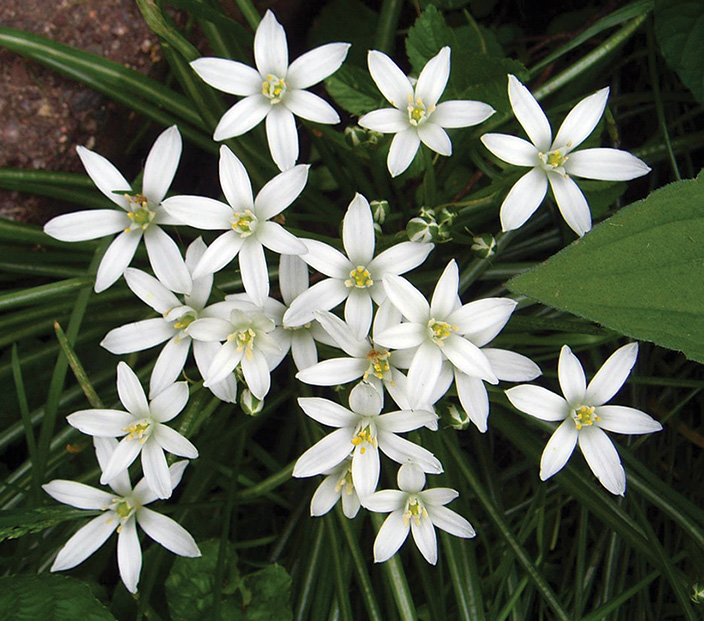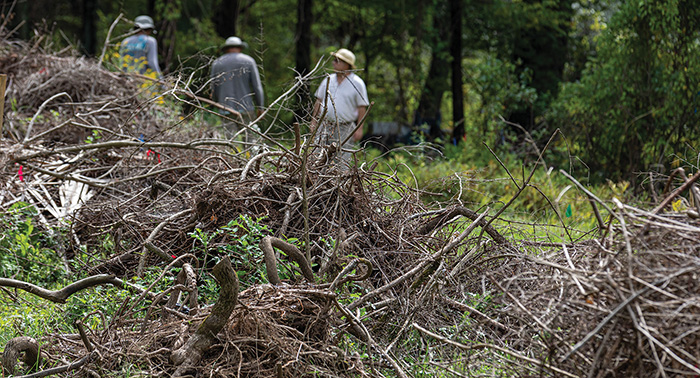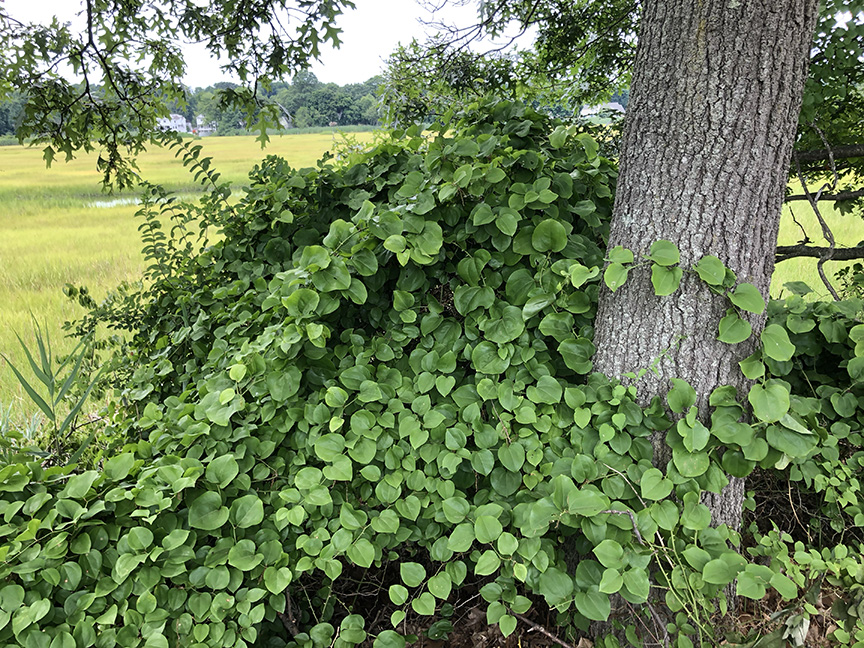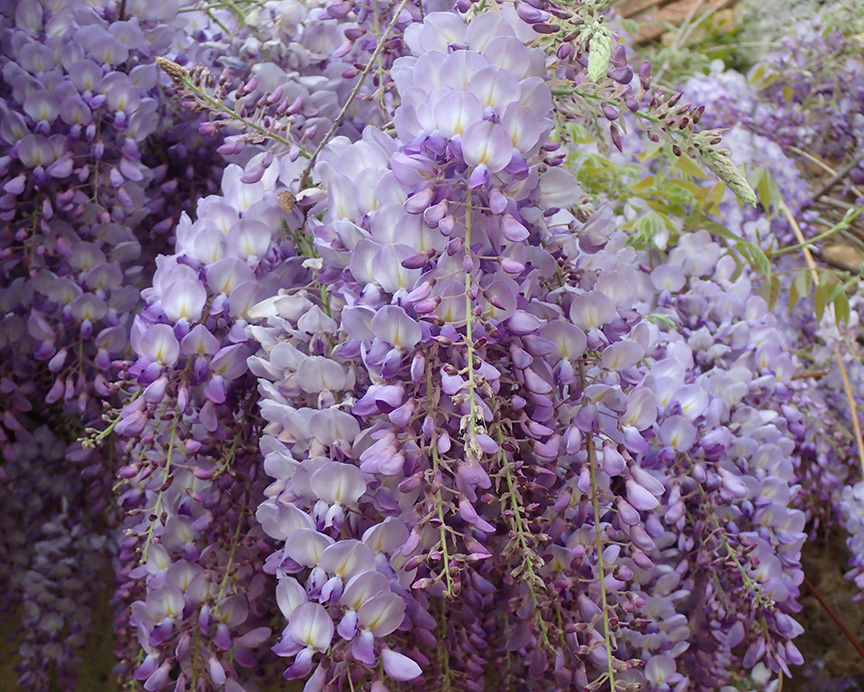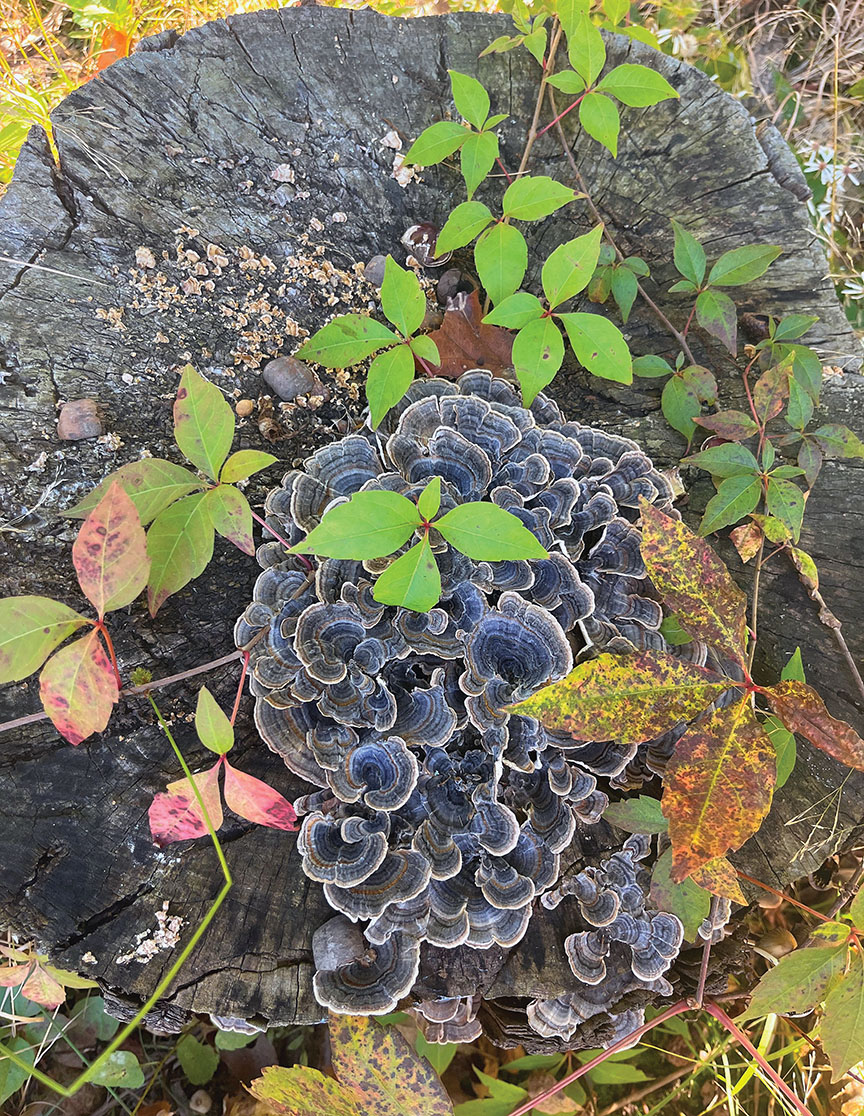Doug Tallamy, an entomologist, ecologist and conservationist at the University of Delaware, has become the de facto leader of the modern conservation movement. He advocates bringing nature to all of our homes and businesses, not just confining it to parks and preserves. Check out Homegrown National Park at homegrownnationalpark.org for more information. His credo is fairly simple … plant mostly native plants, remove invasive plants and reduce your lawn. His research indicates that yards that are planted with 70 percent native plants can support local wildlife. That leaves us 30 percent to indulge ourselves with some non-natives (as long as they’re not invasive). Non-native nectaring plants make a good addition.…
-
-
Plants for the Winter Garden
Warren Leach grew up on a large hilltop farm in Holden, Maine not far from Mt. Desert Island and Acadia National Park. He could see the waters of Blue Hill Bay from the right vantage point. He would help ‘bank’ their house for the winter. An old technique, banking involved weaving boughs and branches around the base of the house to retain snow that would act as a windbreak and insulation. Leach knows all about snow and winter. He also knows plants. He is the owner of Tranquil Lake Nursery in Rehoboth, Mass., and lectures and teaches on a number of subjects. I enjoyed this book because the author believes…
-
CT’s List of Invasive Plants Grows
By Will Rowlands – (All photos by Leslie J. Mehrhoff, UConn via bugwood.org) The Connecticut Invasive Plant Working Group (CIPWG) has announced additions to Connecticut’s official list of invasive plants. We applaud these changes but, alas, the horse has already left the barn as far as most of these plants are concerned. To make matters worse, most of the changes won’t take effect until Oct. 1, 2028 and Oct. 1, 2030. This will allow nurseries and growers time to try and sell off their existing stocks of invasive plants before the new law goes into effect. To be blunt, ecologically sensitive establishments should have phased out most of these plants…
-
Ecology Informs Naturalistic Design
By Duncan Brine The garden world is in the midst of a slow-moving shift from the purely ornamental to the ecological. Today, naturalistic gardens are popular and prevalent. They fulfill a dual function: they are no longer just about the way they look, they are also about how they function ecologically. This article was first published by the Ecological Landscape Alliance in 2025 They’ve had a significant resurgence of late, but the naturalistic garden style has well-known historical antecedents, harkening back to the era of Britain’s prolific designer Capability Brown and his famous Blenheim Palace. Doug Tallamy’s indefatigable efforts have raised environmental consciousness. He is largely responsible for bringing naturalistic…
-
A Child’s Garden
By Jen Dunlap Standing at the mouth of the Bibby & Harold Alfond Children’s Garden, flanked by hedges of creamy white, larger-than-your-face flowerheads of Hydrangea arborescens ‘Abetwo’ Incrediball faintly buzzing with a myriad of insect pollinators, you are met with a quote from Barbara Cooney’s children’s book, Miss Rumphius. Inlayed into a slab of granite beneath your feet, proclaims the advice of a doting grandfather, “You must do something to make the world more beautiful.” Those words resonate deeply, especially in today’s world where so many people are seeking ways to make a positive impact amidst uncertainty. The idea of giving back to the world around us – whether through…
-
Plants and Darkness
By Craig Repasz I remember learning about photosynthesis in fourth grade. We laughed at each other’s butchering of the word. Instead of rolling of the tongue “photosynthesis” turned our tongues into a tangled mess, “foto-sith-ith-ithi-ith.” Years later in college my brain was synthesized into a tangled mess trying to remember the molecular structure of chlorophyll, how photons could excite electrons, light reactions, dark reactions, conversion of CO2 into sugar, the pigments in the plants’ leaves that capture light at all wavelengths so that the plants’ use of sunlight is as efficient as possible. The point is sunlight is crucial to plants and to all life on earth. So, more is…
-
Leave the Logs
By Declan McCabe For 12 summers, my Vermont colleagues and I offered guidance to high school student and teacher teams who conducted research on streams as part of a National Science Foundation Escort program. These teams received training in July, and for the rest of the summer and early autumn, employed their news skills by taking water samples and flow measurements and making observations about aquatic macroinvertebrate populations. They also took note of the size and abundance of fallen logs in the water. I remember students expressing curiosity about this last measurement. Why, they asked, should we bother to note the presence of logs in the water? A good way…
-
Thuggish Greenbrier
By Will RowlandsWe have a new problem plant in Fairfield but we can’t call it invasive because it’s a native! The culprit is Smilax rotundifolia, commonly known as roundleaf greenbrier or common greenbrier. Arthur Haines in Flora Novae Angliae says it’s found all over New England, except Vermont. It grows in dry-mesic or mesic forests, woodlands, fields and pond borders. It’s also found along the moist edges of swampy woods, in Christmas tree plantations and orchards. It may be a native but Teri Dunn Chace includes it her book, How to Eradicate Invasive Plants. It’s also included in Weeds of the Northeast by Richard Uva et al. “Its pliable green…
-
Invasive Wisterias
Both of these invasive wisterias are deciduous woody vines, or lianas, that climb shrubs, trees and manmade structures. Some have been reported to reach 70 feet, limited only by the height of the host. They’re often found along forest edges, roadsides, ditches and rights-of-way. Both have been popular in the nursery trade. Older plants can have stems as thick as 15 inches in diameter. They can grow 10 feet a year and live as long as 50 years. The velvety brown seed pods are 4-6 inches long and appear after flowering, mature during the summer and may persist into winter. Each pod contains 1-8 flat round seeds. Note our native…
-
Improvised Landscapes
By Nicholas Anderson Over the years I have abandoned and inverted my horticultural training, and today, I struggle to describe what I do. When time is short, I simply say that I make meadows with native plants; sometimes I use the term “ecological maximalism.” But definitions don’t really matter when it’s late September, and I’m stopping off at a patch of dirt in Gloucester, Mass., sandwiched between a new housing development and a Market Basket on the edge of a woodland remnant. This article first appeared in the Spring 2023 Arnoldia magazine. Just now I don’t particularly need any new plants, as I have a dozen or so ongoing meadow…


